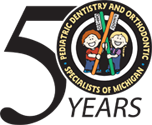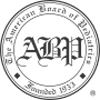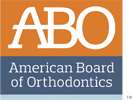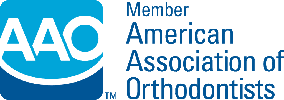CARE AND PREVENTION
Brushing
Patients with braces need to be extra careful when brushing their teeth as there are a lot more places for food and plaque to hide. When you brush your teeth, move the brush in small circular motions to reach food particles that may be under your gum line, under wires, and around the braces. Hold the toothbrush at an angle and brush slowly and carefully, covering all areas between teeth and the surface of each tooth. It will take you several minutes to thoroughly brush your teeth. Brush your tongue and the roof of your mouth before you rinse.
We recommend our patients brush their teeth four times daily to avoid the accumulation of food particles and plaque:
- In the morning after breakfast
- After lunch or right after school
- After dinner
- At bedtime
As soon as the bristles start to wear down or fray, replace your toothbrush with a new one. This will happen more quickly while wearing braces. Do not swallow any toothpaste; rinse your mouth thoroughly with water after you finish brushing. It is important to carefully floss and brush daily for optimal oral hygiene.
Flossing
For areas between the teeth that a toothbrush can’t reach, dental floss is used to remove food particles and plaque. Dental floss is a thin thread of waxed nylon that is used to reach below the gum line and clean between teeth. It is very important to floss between your teeth every day.
Patients often find it more difficult and cumbersome to floss while braces are one. Therefore, our orthodontists strongly encourage the use of a waterpik to spray around braces, at the gumline, and between teeth. Research has clearly shown the use of a waterpik to be equivalent if not more effective than flossing, especially when braces are involved.
Floss or waterpik at night to make sure your teeth are squeaky clean before you go to bed. When you first begin flossing, your gums may bleed a little. If the bleeding does not go away after the first few times, let a staff member know at your next appointment.
Interdental Toothbrush
A Proxabrush is an interdental (between the teeth) toothbrush that you may use to clean underneath and around your wires and braces. Use the Proxabrush gently to avoid damaging your wires. The Proxabrush will help you to clean your braces while maintaining healthy teeth and gums.
Antibacterial Mouthwash
Peroxyl, a hydrogen peroxide antiseptic mouth rinse, will reduce inflammation to your gums and cheeks. Peroxyl helps to prevent infection and decrease irritation that may develop from your braces. Rinse your mouth with two teaspoons of Peroxyl (half a capful) for one minute and then spit it out. You may use Peroxyl up to four times daily following your schedule for brushing: after meals (or after school) and before bed. Just like using peroxide for a scrape on your skin, Peroxyl helps the inside of your mouth heal. Peroxyl can be used for general irritation caused by your braces or for canker sores, cheek bites and other minor temporary injuries to the gums. It doesn’t have alcohol in it so it doesn’t burn either!
Topical Fluoride
Phos-Flur is a sodium fluoride gel that helps prevent tooth decay while you are wearing braces by killing bacteria and replacing minerals in tooth enamel that have been exposed to harmful acids. The use of Phos-Flur does not replace daily brushing and flossing but should be done following your daily schedule at bedtime. Place a small strip of Phos-Flur on a toothbrush and apply it to your teeth for one minute and spit it out. You may not eat or drink for 30 minutes after you use Phos-Flur. It is important for the active ingredient to stay on your teeth for 30 minutes, so do not wash it away by eating or drinking.
You can also use fluoride mouthrinses like Plax or Act or even ask us for a prescription for a high fluoride toothpaste like Prevident 5000.
Cleaning Your Removable Appliance
Brush your removable appliance every day as a part of your regular brushing and flossing schedule. Because food particles and plaque can accumulate on your appliance just as they do on your teeth, there is a strong temptation for people to soak their retainers or appliances. This can discolor and even damage the metal joints of the appliance, causing retainers to break. We strongly encourage you to only soak your appliances in a mixture of water and white vinegar to help loosen build up on your retainer and then follow up by brushing the loose particles off. Or, you can bring your retainer to us to clean at your next retainer check visit!












